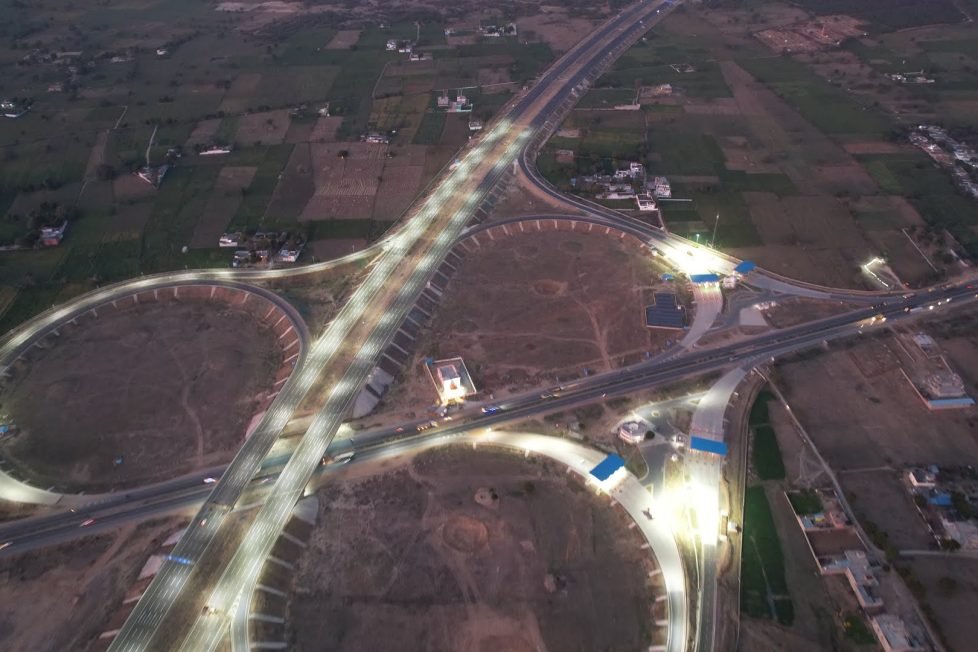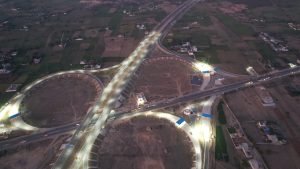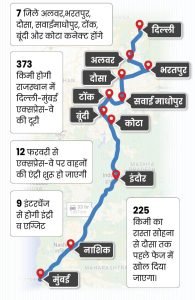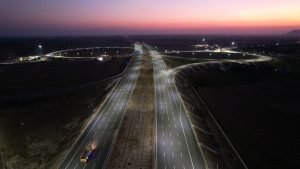How’s Modi Government setting up for making world class infrastructure in India?


PM Narendra Modi will inaugurate the first phase of the Delhi-Mumbai Expressway in Dausa on Sunday. This will be the biggest expressway of the country. The expressway from Dausa’s Bhandarej to Sohna is completely ready.
After the first phase, the second and third phase will also start this year. The fastest work has been done from Sohna to Rajasthan only.
German technology has been used in the construction of the highway. Here vehicles can drive at a speed of more than 150 km, although the speed limit has been fixed here at 120 km per hour.
The distance of the highway from Delhi to Mumbai in Rajasthan will be 373 km. 7 districts of Rajasthan will be connected in this distance. On leaving Delhi, Alwar, Bharatpur, Dausa, Sawaimadhopur, Tonk, Bundi and Kota districts will be connected. There will be only one entry and exit point in every district to connect with the expressway. From here only you will be able to come and go on the highway.
At present, it takes six and a half to seven hours to reach Delhi from Jaipur. It is being claimed that this journey from the expressway will be just 3 hours.
There will be no speed breaker,
the entry of vehicles will be started on the expressway from February 12. Right now the road has been blocked by placing cement blocks at the toll gate. Only one entry and exit point has been kept in every district on the expressway. While returning here only toll will be charged. There will be no obstruction anywhere on the highway on the way. There will be no speed breakers and the expressway has been made so high that stray animals will not come. From Dausa we started the journey towards Delhi by expressway.
These services would be available on the expressway –


Technology : Fighter jets can take off from the road
Fighter jets and planes can also be landed on the expressway. Eight places between Delhi and Dausa and 53 places on the entire highway have been identified where emergency landing can be done. A 4-layer layer has been made to make the road. Due to which the road becomes very strong.
Fibrous coarse grains have been used in German technique for road construction. In this, very small granules of matrix or groundmass material are mixed. Then large grains, crystals are added, so that the road can tolerate high temperature. Loading vehicles will have no impact on the road.
Innovation: The first Greenfield Expressway will be there, pure air will be available.
There will also be a feel of Greenfield Expressway on the Delhi-Mumbai Expressway. More than 10 lakh saplings are being planted here to reduce pollution. A space of about 10 to 15 feet has been kept between the two roads. Big circles have been made at the exchange points. Neem, Snake, Erica, Gerbera and Xylene are being specially planted here. These plants will keep the environment pure. They observe poisonous gases along with carbon dioxide.

Security: CCTV at every 500 meters during the journey,
we saw security on the entire expressway. Here CCTVs have been installed at every 500 meters. After going on the expressway, the complete record will be available in these cameras. Where did you board the express and where did you get down? In case of incidents like kidnapping or the escape of a gangster, the complete details will be known in advance.
Rules : If the speed is more than 120 kmph, then online challan
Till now people can drive at any speed on any highway, but this will not happen on this expressway. There are speed meters installed here and there. Online challan will be deducted if the vehicle is driven in more than 120 speed. The message will come on the mobile number present in the record of the vehicle. It will be completely hi-tech. Its fine will also be collected on the highway itself.
Safety: Stray animals will not disturb
The expressway will be completely safe. There is no such highway in India where accidents do not happen due to stray animals. NHAI claims that stray animals will not be able to enter the expressway. For this, huge railings have been installed on both sides of the expressway. Apart from this, the height of the expressway is more than the normal highway, so that animals cannot climb.

Construction: Expressway made of 8 million tonnes of cement
More than 8 million tonnes of cement has been used in the entire project. 1.2 million tonnes of steel has also been used in the construction of bridges, underpasses and interchanges on the highway.
Acquisition of 1500 hectares of land
The expressway will be of 1350 km from Delhi to Mumbai. To build the expressway, 1500 hectares of land was acquired in five states. 350 million cubic meters of soil has also been used in this. The length of expressway will be 426 in Gujarat, 373 in Rajasthan, 244 in Madhya Pradesh, 171 in Maharashtra, 129 in Haryana.
Plan: 225 km will be opened in the first phase, 100 km will be opened in the second.

The 225 km road from Sohna to Dausa will be opened in the first phase. PM Modi will inaugurate it on 12 January. In the second phase, the 100 km Vadodara-Ankleshwar highway will be opened in March 2023 and the 211 km Jhalawara-MP highway in June 2023. So far, out of 1355 km long highway, 738 km has been completed.

Income: Toll tax of more than 15 thousand crores
will be received. After the start of the expressway, the government will get more than 15 thousand crore rupees as toll tax every year. Here toll will be charged on per km. However, compared to other highways, there is a lot of difference in the prices here. 0.65 paise has been fixed for car and light vehicle, 1.05 for commercial and mini bus, Rs 2.20 for bus or truck, Rs 3.45 for heavy machinery and Rs 4.20 for heavy vehicle.
A total of 9 interchanges have been made on the expressway including Hilalpur, Noont, Khalilpur Palwal, Kajijar Noont, Ghat Shamshabad, Alwar Sheetal, Pinan and Bhandarej, Dungarpur and Bad Ka Pada. From Bhandarej of Dausa, one can leave on the highway to go to Dausa and Jaipur, Bharatpur. Along with this, Lalsot-Kothun highway will be connected in Dungarpur. Will be connected from Lalsot to Kaithun at Badka Pada.

Tanks would be built to conserve the rain water
Tanks are being made to save rain water on the highway. When it rains, the water directly from the highway will go into these tanks only. The capacity of these tanks will be around 700 litres. From these tanks water will be supplied to the plants on the expressway. Drip systems have been installed to deliver water to the plants. Small water pipes have been installed till every plant. Water will not flow in vain because of this. Plants will be irrigated with water on time. Tanks are being built on both sides of the highway. Only in Dausa district 130 tanks have been made. More than two thousand tanks will be built on the entire highway. A tank will be built at a distance of every 500 meters.
DISCLAIMER: The author is solely responsible for the views expressed in this article. The author carries the responsibility for citing and/or licensing of images utilized within the text.
